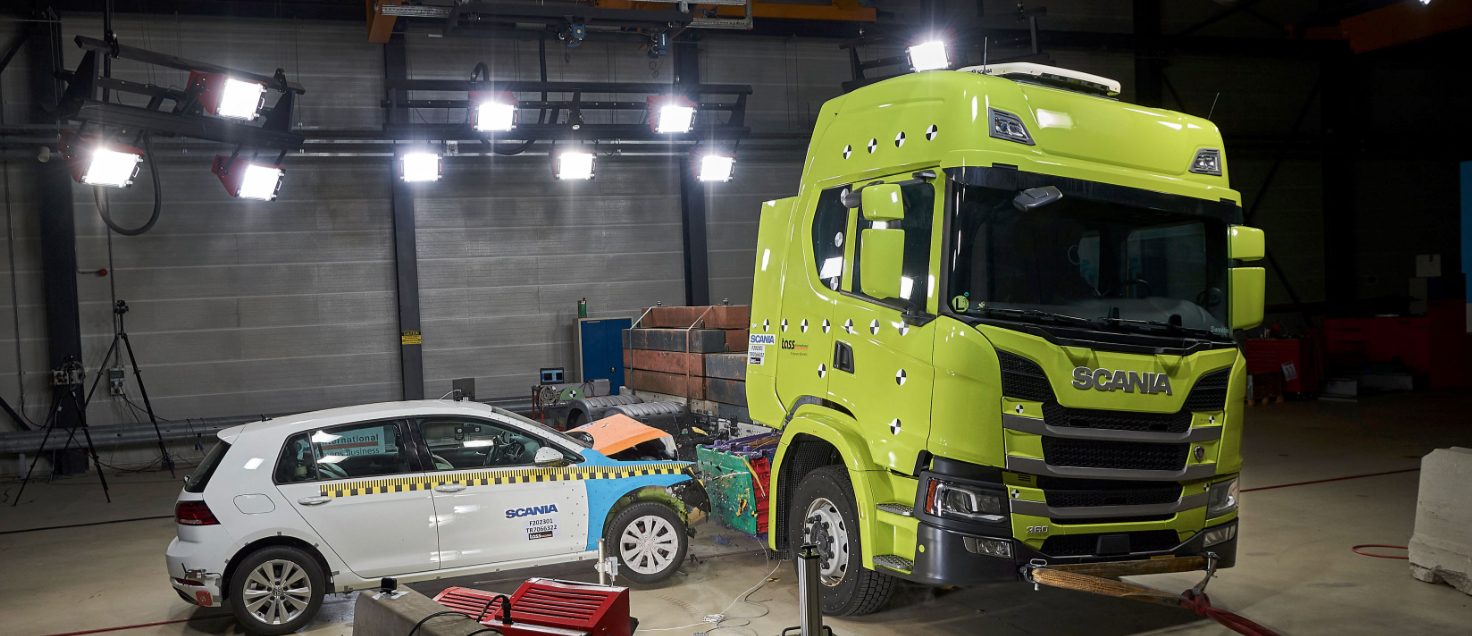
A violent crash into the side of the truck is not what anyone hopes for. But that is exactly what Scania‘s engineers deliberately orchestrate to improve safety in electric trucks.
Preparations for any crash test are massive. It can take months of precision planning to get all the details just right. “And then it‘s over in less than a second,” says Scania R&D test engineer Jakob Leygraf.
The real test only takes place after numerous simulations have been carried out. “The actual crash test is ultimately only to confirm that our calculations were accurate.”
Preparations and simulations
As the first hybrid truck was launched a few years ago, fine-tuning test methods started.
“A great deal of development efforts forego a crash test such as this,” says Mikael Littmann, head of mechanical testing. “We simulate over and over again, with different speed and angles. Simulation is a powerful tool that is both faster and less expensive than the full-scale equivalent. We base the actual test on the results of our simulations.”
Not only is the entire truck involved, but the different parts are also tested separately. “The users rightly have high demands on safety, and so do we.”
The hard work pays off for testing future truck models, when the team is already one step ahead. “The testing is very much alive. We adjust the parameters until it‘s as perfect a replication of a real scenario as it can be, before we carry out the actual test,” says Leygraf.
A different kind of set-up
Crash testing an electric truck differs somewhat from that of a truck with a combustion engine.
The energy from the impact needs to be distributed and should spread throughout the structure surrounding the battery. The desired state is that it turns into plastic deformation and kinetic energy in less critical components.
“Since we want the crash test to be as authentic as possible, we use a real car for the impact, as that puts a lot more stress on the structure than if we‘d used a barrier,” Littmann continues.
Firefighters stand by just in case when the test is performed because as Leygraf notes, ”this is the ultimate test, we do this for real”.
And what about the test? It went as expected and the battery emerged unscathed. See the video here: https://youtu.be/mzGvG-orv6g





